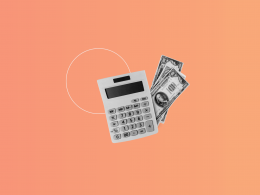Nowadays, the rise of online marketplaces has transformed the landscape of ecommerce, providing both buyers and sellers with unparalleled reach and convenience. Among the multitude of online marketplaces available, Amazon and eBay stand out as two of the most prominent platforms for ecommerce sellers.
In this article, we’ll try to give a comprehensive comparison of selling on Amazon and eBay, which might eventually help you make an informed decision about the platform that aligns best with your ecommerce business goals and requirements. By examining various aspects such as seller fees, fulfillment methods, customer base, and product categories, we’ll provide valuable insights into the strengths and considerations of each marketplace. Whether you are a seasoned seller or just starting your ecommerce journey, this article will serve as a guide to navigate the dynamic world of online selling on Amazon and eBay. So, let’s dive in and explore the similarities, differences, and nuances between these two ecommerce giants.
Overview of Amazon
Amazon is a multinational technology company and one of the largest online marketplaces in the world. It was founded by Jeff Bezos in 1994 as an online bookstore but later expanded to a wider array of services and products. Today, Amazon has transformed into a diverse conglomerate with various business segments and a significant presence in e-commerce, cloud computing, digital streaming, artificial intelligence, and more. Here’s an overview of Amazon’s key components:
- Ecommerce: Amazon’s e-commerce platform allows individuals and businesses to sell products to customers worldwide. With a vast selection of products across numerous categories, Amazon provides a convenient and reliable shopping experience for millions of customers.
- Amazon Prime: Amazon Prime is a subscription service that offers members benefits such as fast shipping, access to streaming services like Prime Video and Prime Music, exclusive deals, and more. Prime has millions of subscribers globally, making it a key driver of Amazon’s success.
- Amazon Web Services (AWS): AWS is Amazon’s cloud computing division, providing a comprehensive suite of cloud services to individuals, startups, and enterprises. AWS offers scalable infrastructure, storage, computing power, and other cloud-based solutions to businesses worldwide.
- Digital content and services: Amazon offers various digital content and services, including Kindle e-readers, e-books, audiobooks, digital music, and streaming video through Amazon Prime Video. It also produces original content through Amazon Studios.
- Devices: Amazon has developed a range of consumer electronic devices, including the Amazon Echo smart speaker powered by the voice-activated virtual assistant Alexa, Fire tablets, Fire TV streaming devices, and Ring home security products.
- Logistics and fulfillment: Amazon has built an extensive logistics and fulfillment network to ensure efficient and timely delivery of products. This includes fulfillment centers, delivery stations, and partnerships with shipping carriers.
- Advertising: Amazon has developed a robust advertising platform, allowing sellers to promote their products through targeted ads on Amazon’s website and apps. It also offers advertising services outside of its marketplace.
- Innovation and technology: Amazon has consistently focused on innovation, investing in emerging technologies such as artificial intelligence, machine learning, robotics, and autonomous delivery systems to improve operations and customer experiences.
- Market expansion: Amazon has expanded its global presence with marketplaces in multiple countries, including the United States, United Kingdom, Germany, Japan, India, and many more. It continues to explore new markets and opportunities worldwide.
Advantages of selling on Amazon
Vast customer base and high traffic volume on Amazon
Amazon.com consistently receives over two billion visitors each month, with 2.4 billion visitors in March 2023 (Similarweb, 2023) and it’s estimated that Amazon has over 310 million active users worldwide, with around 80% of them from the US, accounting for more than 230 million customers.
Amazon global presence
Amazon operates in more than 100 countries and has 20 international marketplaces.
Amazon FBA program
With FBA (Fulfilled by Amazon), Amazon handles storage, packaging, and shipping logistics on your behalf, streamlining your operations and enhancing customer satisfaction. FBA can save time and resources, allowing sellers to focus on other aspects of their business.
Trust and credibility
Amazon’s brand reputation instills trust in buyers, making it easier for sellers to attract customers and build credibility. It’s common knowledge that buyers often prefer purchasing from Amazon due to its reputation for excellent customer service and reliable transactions.
Drawbacks of selling on Amazon
Intense competition and saturation
Some product categories on Amazon are highly competitive, requiring sellers to navigate through saturation and adopt unique strategies to stand out. Amazon sellers must invest in marketing efforts and differentiation to compete effectively in crowded markets.
Amazon strict rules and policies
Amazon enforces stringent rules and policies, which sellers must adhere to. Failure to comply can result in account suspension or penalties. Amazon sellers need to always stay updated with Amazon’s policies and guidelines to maintain a good standing on the platform.
Amazon fees and commissions
Amazon charges fees and commissions on sales, which can impact profit margins for sellers who should carefully consider their pricing and expenses to ensure profitability on the platform.
Overview of eBay
eBay is a well-known global ecommerce platform that connects buyers and sellers in a digital marketplace. Established in 1995, eBay has become one of the pioneers of online shopping and a popular platform for individuals and businesses to buy and sell a wide range of products. Here’s an overview of eBay’s key features and components:
- Online marketplace: eBay provides an online marketplace where sellers can list products and buyers can browse and purchase items. The platform offers a diverse range of products across various categories, including electronics, fashion, collectibles, home goods, and more.
- Auction-style and fixed-price listings: eBay offers both auction-style and fixed-price listings. Auction-style listings allow sellers to set a starting price, and buyers can bid on the item until the auction ends. Fixed-price listings provide a set price at which buyers can purchase the item immediately.
- Seller tools and features: eBay offers a range of tools and features to support sellers, including listing templates, promotional tools, seller analytics, and customer support. These resources help sellers optimize their listings, manage inventory, and provide excellent customer service.
- Buyer protection: eBay emphasizes buyer protection and trust through features like seller ratings, buyer feedback, and dispute resolution processes. These measures help ensure a safe and reliable shopping experience for buyers.
- eBay stores: eBay offers sellers the option to open their own eBay stores, providing a branded space to showcase their products and create a more personalized shopping experience for customers.
- Mobile apps: eBay provides mobile applications for both iOS and Android devices, enabling users to browse, buy, and sell items conveniently from their smartphones and tablets.
- PayPal integration: PayPal, a widely used online payment platform, was originally part of eBay but became an independent company in 2015. However, PayPal remains a popular payment option on eBay, offering secure and convenient transactions for buyers and sellers.
- Sustainability initiatives: eBay has implemented sustainability initiatives to reduce its environmental impact. This includes promoting recycling, energy conservation, and encouraging sellers and buyers to engage in eco-friendly practices.
Advantages of selling on eBay
Wide range of product categories and niche markets on eBay
eBay’s diverse marketplace allows sellers to cater to specific niche markets, offering potential for higher profit margins. eBay sellers with unique or rare products may find eBay to be a more suitable platform to target specific customer segments.
Pricing flexibility and auction-style listings of eBay
eBay allows sellers to set their own prices and engage in auction-style listings, giving them more control over pricing strategies. Ebay auction-style listings can sometimes lead to higher prices if buyers engage in bidding wars, resulting in increased revenue for sellers.
Direct communication with eBay customers
eBay facilitates direct communication between sellers and buyers, enabling personalized interactions and potential for repeat business. This direct engagement can help eBay sellers build rapport, address buyer concerns, and establish long-term relationships with customers.
eBay global presence
eBay International Shipping program enables US sellers to reach buyers in over 200 countries effortlessly, without the need to handle overseas shipping, customs, or returns. Currently, this program is exclusively available for eligible US sellers, but they plan to expand it to more sellers soon.
Drawbacks of selling on eBay
Lower customer traffic compared to Amazon
While eBay still attracts a significant number of buyers, it may not match the sheer volume of customers found on Amazon: in June 2023, ebay.com received a total of 587 million visitors, while the reported number of buyers for the first quarter of 2023 was 133 million. So eBay sellers need to take more marketing and promotion efforts than Amazon sellers to drive traffic to their listings and generate sales.
Reliance on self-fulfillment and shipping logistics
Unlike Amazon FBA, eBay sellers are responsible for managing their own fulfillment and shipping, which can be time-consuming and require additional resources. Sellers must ensure efficient shipping processes and timely delivery to meet buyer expectations.
Building trust as a new eBay seller
As a new seller on eBay, building trust and establishing a positive reputation can be challenging, as buyers often consider the feedback and ratings of sellers. eBay sellers should focus on delivering exceptional customer service and prompt resolution of any issues to build trust and credibility.

Amazon vs eBay fulfillment methods
Fulfillment methods play a crucial role in the selling process on online marketplaces like Amazon and eBay. Let’s compare the fulfillment options available on both platforms.
Amazon fulfillment options
Fulfilled by Amazon (FBA)
- With FBA, sellers send their inventory to Amazon’s fulfillment centers, where it’s stored, picked, packed, and shipped by Amazon.
- FBA offers several advantages, including streamlined logistics, fast shipping, and access to Amazon Prime’s fast and free shipping options.
- Amazon handles customer service, returns, and refunds, relieving sellers of these responsibilities.
- Seller Fulfilled Prime (SFP):
- SFP allows sellers to fulfill Prime orders themselves while still maintaining the Prime badge on their listings.
- Sellers must meet Amazon’s strict performance metrics and comply with Prime shipping requirements.
- This option offers more control over fulfillment processes but requires sellers to have efficient logistics and resources to meet Amazon’s expectations.
- SFP allows sellers to fulfill Prime orders themselves while still maintaining the Prime badge on their listings.
- Merchant Fulfilled Network (MFN):
- With MFN, sellers handle their own fulfillment and shipping processes.
- Sellers are responsible for storing inventory, packing orders, and arranging shipping through their preferred carriers.
- This option provides flexibility but requires sellers to manage logistics and ensure timely and reliable delivery to customers.
- With MFN, sellers handle their own fulfillment and shipping processes.
eBay fulfillment options
- Self-fulfillment:
- On eBay, sellers are primarily responsible for managing their own fulfillment and shipping operations.
- Sellers store inventory, pack orders, and arrange shipping through their chosen carriers.
- This option offers control over the fulfillment process but requires sellers to invest time and resources into managing logistics effectively.
- On eBay, sellers are primarily responsible for managing their own fulfillment and shipping operations.
- Third-party logistics (3PL):
- eBay allows sellers to leverage third-party logistics providers for fulfillment.
- Sellers partner with a 3PL company that handles warehousing, packing, and shipping on their behalf.
- Using a 3PL can help streamline operations and reduce fulfillment-related tasks for sellers.
- eBay allows sellers to leverage third-party logistics providers for fulfillment.
Comparison of fulfillment methods
- Logistics and efficiency:
- Amazon’s FBA program offers the most streamlined and efficient fulfillment solution, as Amazon handles storage, packaging, and shipping.
- eBay’s self-fulfillment requires sellers to manage their logistics, which can be more time-consuming and labor-intensive.
- Amazon’s FBA program offers the most streamlined and efficient fulfillment solution, as Amazon handles storage, packaging, and shipping.
- Shipping speed and options:
- Amazon’s FBA provides access to fast and reliable shipping options, including Amazon Prime’s two-day delivery for eligible products.
- eBay’s fulfillment methods are dependent on the seller’s chosen carrier, which may not offer the same level of speed or consistency as Amazon’s options.
- Amazon’s FBA provides access to fast and reliable shipping options, including Amazon Prime’s two-day delivery for eligible products.
- Customer service and returns:
- With Amazon’s FBA, customer service, returns, and refunds are managed by Amazon, reducing the seller’s involvement.
- On eBay, sellers are responsible for handling customer service inquiries and managing returns and refunds directly.
- With Amazon’s FBA, customer service, returns, and refunds are managed by Amazon, reducing the seller’s involvement.
- Cost considerations:
- Amazon charges fees for its fulfillment services, including storage, picking, packing, and shipping.
- eBay’s self-fulfillment allows sellers to have more control over costs but requires investments in warehousing, packaging materials, and shipping expenses.
- Amazon charges fees for its fulfillment services, including storage, picking, packing, and shipping.
- Prime eligibility:
- Only sellers using Amazon’s FBA or Seller Fulfilled Prime (SFP) are eligible to offer Prime shipping options to customers.
- eBay doesn’t have an equivalent Prime program, so sellers must rely on their own fulfillment methods to provide fast shipping options.
- Only sellers using Amazon’s FBA or Seller Fulfilled Prime (SFP) are eligible to offer Prime shipping options to customers.
To recap, Amazon’s FBA program offers a comprehensive and efficient fulfillment solution, particularly for sellers looking for hassle-free logistics and access to Prime benefits. eBay, on the other hand, gives sellers more control over fulfillment but requires them to manage their own logistics and shipping processes. Sellers should consider their business needs, resources, and priorities when choosing the most suitable fulfillment method on each platform.
Amazon vs eBay fees
When selling on online marketplaces like Amazon and eBay, it’s important to consider the fees and commissions associated with each platform. Let’s look at the seller fees on Amazon and eBay.
Amazon Seller Fees
- Referral fees:
- Amazon charges referral fees as a percentage of the item’s sale price, varying by category.
- The referral fee typically ranges from 6% to 45% of the item’s price, depending on the product category.
- Certain categories like electronics and media tend to have higher referral fees.
- Amazon charges referral fees as a percentage of the item’s sale price, varying by category.
- FBA fees:
- If you use Amazon’s Fulfilled by Amazon (FBA) program, additional fees are incurred for storage, order handling, and shipping.
- FBA fees vary based on the size and weight of the item, as well as the duration of storage in Amazon’s warehouses.
- If you use Amazon’s Fulfilled by Amazon (FBA) program, additional fees are incurred for storage, order handling, and shipping.
eBay Seller Fees:
- Insertion fees:
- eBay charges insertion fees for listing products on their platform.
- The insertion fee is based on the starting price or reserve price of the item.
- Sellers typically receive a certain number of free listings per month, and additional fees apply for exceeding the limit.
- eBay charges insertion fees for listing products on their platform.
- Final value fees:
- eBay charges final value fees based on a percentage of the total transaction value, including handling and shipping costs, plus $0.30 per order.
- eBay charges final value fees based on a percentage of the total transaction value, including handling and shipping costs, plus $0.30 per order.
- Additional fees:
- Optional features such as listing upgrades, extra photos, and subtitle additions incur additional fees on eBay.
- eBay also offers various advertising and promotion options, which may have associated fees.
- Optional features such as listing upgrades, extra photos, and subtitle additions incur additional fees on eBay.
Comparison of Seller Fees
- Fee structures:
- Amazon charges referral fees based on the item’s sale price, while eBay charges insertion fees and final value fees based on the transaction value.
- Amazon’s referral fees are generally a percentage of the sale price, whereas eBay’s final value fees include both the item price and shipping costs.
- Amazon charges referral fees based on the item’s sale price, while eBay charges insertion fees and final value fees based on the transaction value.
- Fee rates:
- The specific fee rates on both platforms vary by product category.
- It’s important to review the fee schedules provided by Amazon and eBay to understand the applicable rates for your specific product categories.
- The specific fee rates on both platforms vary by product category.
- Additional fees:
- eBay has additional fees for optional features and advertising, allowing sellers to enhance their listings and increase visibility.
- Amazon’s FBA program incurs additional fees for storage, fulfillment, and other services, but it provides added convenience and benefits.
- eBay has additional fees for optional features and advertising, allowing sellers to enhance their listings and increase visibility.
- Free listings:
- eBay typically offers a certain number of free listings per month, whereas Amazon doesn’t provide free listings but charges referral fees on each sale.
- eBay typically offers a certain number of free listings per month, whereas Amazon doesn’t provide free listings but charges referral fees on each sale.
In short, sellers should carefully consider the fee structures and associated costs on Amazon and eBay to determine which platform aligns best with their business model, profit margins, and sales volume. It’s important to factor in these fees when setting product prices and evaluating the profitability of selling on each platform.
Read more about marketplace fees.
Amazon vs eBay best selling products in 2023
What to sell on Amazon in 2023
The choice of the best products to sell or resell in the Amazon store depends on factors such as your business model, goals, and other considerations. It is essential to understand your target audience and their preferences when selecting products. Exploring trending products across various categories can provide inspiration. To give you some ideas, here are examples of popular items and categories based on the Best Sellers list in the Amazon store:
- Beauty & personal care: Examples are hair growth oils, acne products, false eyelash mascara, skin moisturizers, anti-aging products, makeup, skin exfoliants, and Q-tips.
- Kitchen & dining: These are food scales, travel tumblers, stainless steel water bottles, collapsible microwave covers, meat thermometers, manual smoothie blenders, can openers, dish cloths, toddler sippy cups, rice cookers, veggie slicers, knife brushes, and oil sprayers.
- Automotive: It’s windshield wiper blades, car cup coasters, car seat headrest hooks, car phone mounts, car trash cans, bumper retainer clips, scanner code readers, jump starters, car interior cleaners, microfiber cleaning cloths, headlight restoration kits, car vacuums, portable air compressors, leather conditioner, and phone screen protectors.
- Clothing, shoes & jewelry: Examples include adult clogs, shapewear, running shoes, slippers, hoodies, moisture control sticks, yoga pants, loafers, leggings, boxer briefs, bikini brief underwear, vacuum storage bags, sweatpants, sweatshirts, and compression packing organizers.
- Electronics: These are wireless earbuds, Fire TV stick, Apple AirTag, Apple AirPods with lightning connector, 4-pack Apple AirTags, USB wall chargers, Apple lightning adapters, fitness trackers, iPads, Kindles, Roku remote replacements, 4K smart TVs, Amazon Fire HD tablets, Roku streaming devices, surge protectors, Amazon Fire tablets for kids, and monitor wall mounts.
- Appliances: Examples are ice makers, ice machine cleaners, ductless range hoods, countertop ice makers, ice filters, fridge locks, mini fridges, mini freezers, compact portable washing machines, and compact portable burner cooktops.
It’s important to note that the top-selling products on Amazon can change rapidly. What’s popular one week may not perform well the next. To achieve lasting success, it is recommended to incorporate ongoing product research into your business model and stay updated with market trends.
Read our comparison Walmart vs Amazon.
What to sell on eBay in 2023
eBay serves as a platform connecting millions of sellers with active buyers worldwide. When deciding what to sell on eBay, you may consider whether to offer a unique product or tap into the latest trends. eBay keeps track of the most popular items among buyers, allowing you to offer in-demand products. Here are examples of globally sought-after items on eBay:
- eBay motors: These are parts and accessories for various types of vehicles, performance and racing parts as well as in-car technology, GPS, security, and other items.
- Home & garden: What really sells well is small kitchen appliances, heating, cooling and air systems, and also pantry items.
- Business & industrial: These include industrial automation and motion controls, medical, lab and dental supplies, and the like.
- Clothing, shoes & accessories: it’s men’s clothing and shoes, women’s clothing.
- Collectibles: Examples include crystals and mineral specimens, WW II and current militaria collectibles.
- Jewelry & watches: These are watches and watch accessories, parts, tools and guides.
- Health & beauty: Such items include vitamins and minerals, unisex fragrances, over-the-counter medications and treatments.
By exploring these popular categories, you can gain insights into the types of products that have high demand on eBay’s marketplace. It’s important to adapt your product selection to changing trends and customer preferences to maximize your selling potential on eBay.
For more information, check out our detailed guides on the best products to sell on Amazon FBA and best selling items on eBay.
Closing thoughts
On the whole, both Amazon and eBay offer unique advantages and considerations for sellers. Amazon’s vast reach, FBA program, and brand reputation make it an attractive option, particularly for sellers looking to tap into a global customer base. The convenience of Amazon’s FBA program, which handles storage, shipping, and customer service, can save sellers time and effort. Additionally, Amazon’s strong brand reputation instills trust in buyers and provides a sense of security. However, it’s important to note that Amazon’s competitiveness and stringent policies may require sellers to navigate a more saturated and regulated marketplace.
On the other hand, eBay’s diverse product categories and pricing flexibility cater to specific niche markets. The auction-style and fixed-price listings on eBay provide sellers with more control over pricing strategies, and the platform’s negotiation options can be advantageous in certain cases. eBay’s wide range of product categories also allows sellers to explore unique and specialized markets. However, sellers on eBay should be prepared for more involvement in the fulfillment process and may need to invest additional effort into building their brand presence and reputation.
When deciding between Amazon and eBay, consider your business goals, available resources, and target audience. By weighing the pros and cons of each platform, you can make an informed decision that meets your ecommerce business’s needs and maximizes your online selling potential. Remember, success ultimately lies in understanding your business requirements and choosing the platform that best suits your goals and capabilities.
Being a seller on Amazon or eBay takes a lot of time and effort, which can be saved by automating certain tasks. Synder Sync, a cutting-edge accounting software solution will take over your accounting routine. It can transfer exhaustive transactions data from your sales and payments channels into the books making sure there are no duplicate entries or errors. Explore Synder’s full potential during a15-day free trial with no commitment or credit card required or book a seat at a webinar for a Synder specialist to talk you through the workflow.

.png)




